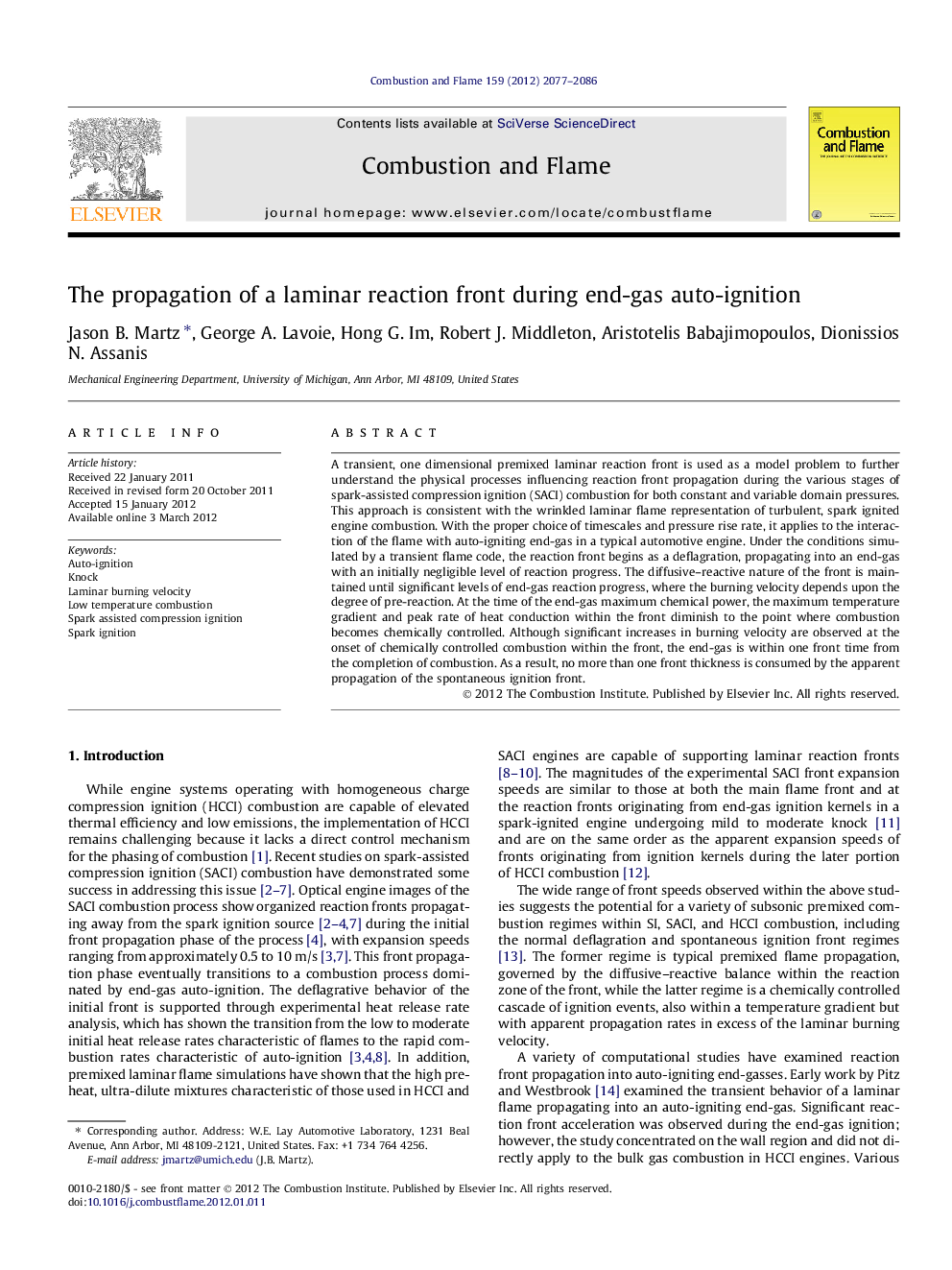| Article ID | Journal | Published Year | Pages | File Type |
|---|---|---|---|---|
| 167191 | Combustion and Flame | 2012 | 10 Pages |
A transient, one dimensional premixed laminar reaction front is used as a model problem to further understand the physical processes influencing reaction front propagation during the various stages of spark-assisted compression ignition (SACI) combustion for both constant and variable domain pressures. This approach is consistent with the wrinkled laminar flame representation of turbulent, spark ignited engine combustion. With the proper choice of timescales and pressure rise rate, it applies to the interaction of the flame with auto-igniting end-gas in a typical automotive engine. Under the conditions simulated by a transient flame code, the reaction front begins as a deflagration, propagating into an end-gas with an initially negligible level of reaction progress. The diffusive–reactive nature of the front is maintained until significant levels of end-gas reaction progress, where the burning velocity depends upon the degree of pre-reaction. At the time of the end-gas maximum chemical power, the maximum temperature gradient and peak rate of heat conduction within the front diminish to the point where combustion becomes chemically controlled. Although significant increases in burning velocity are observed at the onset of chemically controlled combustion within the front, the end-gas is within one front time from the completion of combustion. As a result, no more than one front thickness is consumed by the apparent propagation of the spontaneous ignition front.
